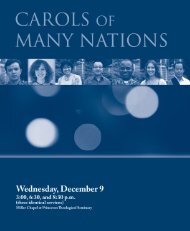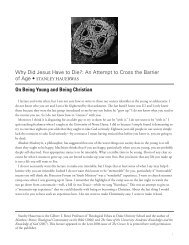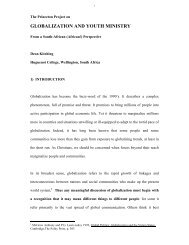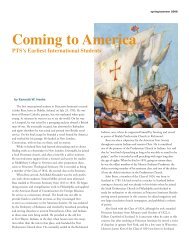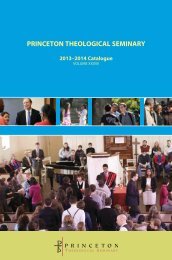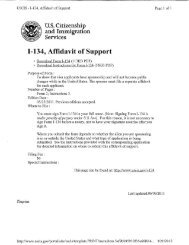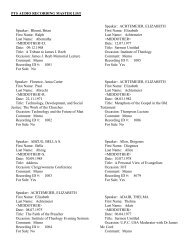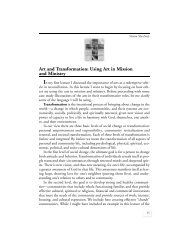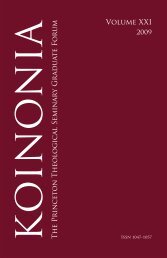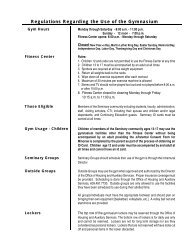P E R S P E C T I VAS - Princeton Theological Seminary
P E R S P E C T I VAS - Princeton Theological Seminary
P E R S P E C T I VAS - Princeton Theological Seminary
Create successful ePaper yourself
Turn your PDF publications into a flip-book with our unique Google optimized e-Paper software.
Perspectivas/Occasional Papers • Fall 2006Perspectivas/Occasional Papers • Fall 2006Irish, Polish, Jewish and Italian immigrants heard more than ahundred years ago, at the turn of the twentieth century.• Fact Six: It is not true that immigrants from Latin Americarefuse to speak English or maintain a separatist attitude.English is far from being a beleaguered language in need ofdefense. More than 90 percent of immigrants in the U.S. speakEnglish, at least to some extent. Almost universally, they try tospeak the dominant tongue to better communicate withemployers and service providers. English as a SecondLanguage courses are oversubscribed throughout the nation.It is unreasonable to think that people who first came to thiscountry in search of opportunity would spurn a major skillnecessary for their own economic and social advancement.Most second-generation immigrants speak only English(Portes and Rumbaut 2001). In fact, where immigrants areconcerned, the problem is not that they refuse to learn English,but that they lose the language of their ancestors so quickly.• Fact Seven: All attempts at curtailing illegal immigration to theU.S. have failed largely because the availability of legal residentvisas is in great disparity with both employer demandand labor supply. Under present regulations, Mexico—aneighboring country with a population of 107 million peopleand a long trajectory of economic interdependence with theU.S.—is entitled to the same number of legal entries as tinycountries in Africa and Oceania (Massey 2003). The waitingperiod to gain legal admission to this country ranges betweenten and twenty years. Less costly and wasteful than currentproposals for the construction of fences and the expansion ofvigilante squads along the U.S.-Mexico border would be toclose the quota disparity in ways that reflect true market conditions.• Fact Eight: Reputable studies show that, on the average, first-18generation immigrants exhibit better health indicators than theU.S. public at large (Rumbaut 1996; 1999). That is partlybecause limited resources prevent them from partaking of thedangerous distractions that so often doom more establishedpopulations. Child mortality and morbidity rates are lowamong first-generation Mexicans as is the consumption of controlledsubstances. The evidence does not support the claimthat illegal immigrants are carriers of disease.• Fact Nine: At least a third of illegal immigrants in the UnitedStates are youngsters who first entered the United States withtheir parents. Those children did not make an independentdecision to cross borders illegally. They have grown up in thiscountry, speak only English, and many have no memory oftheir ancestral nation. Yet, given their irregular status, thosechildren face limited opportunities in education and employment.Their fate should be a central concern among policymakers.• Fact Te n : Mounting evidence, the result of painstakingresearch, clearly shows that, in the age of globalization andwith growing points of contact between Mexico and the U.S.,illegal immigration will continue unabated. The question isnot whether people will keep flowing to points of opportunitybut whether more will have to die or sink to the bottom of thesocial ladder in the process.Conclusion: On Whose Side is God?To reconcile American values and history with present attitudestowards immigration boggles the mind. A country knownfor its reliance on democratic ideals, market forces, and culturaltolerance is presently engaged in a denial of its own tradition. TheAmerica that overcame Nazism and Communism now sees a few19



